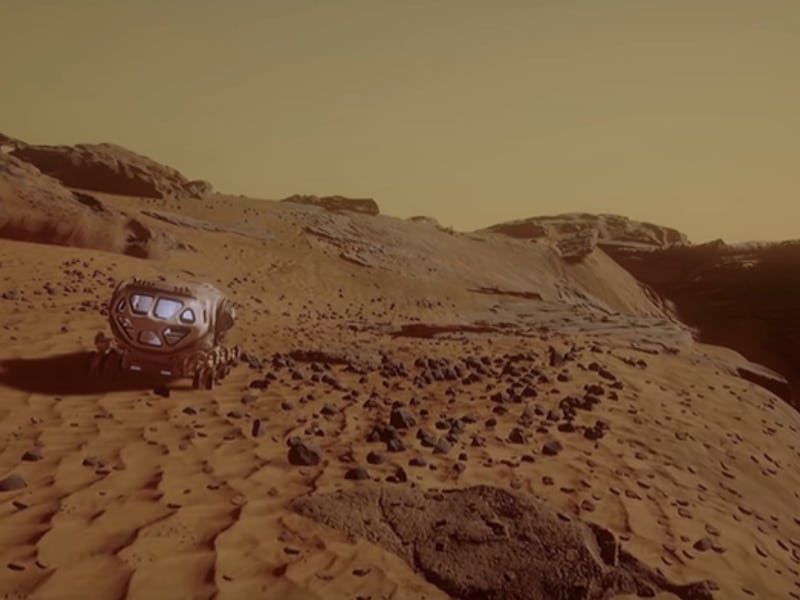Playing VR Game 'Mars 2030', Which Uses NASA Data to Explore the Red Planet
Playing the new experience from Fusion, NASA and MIT.

It was cool to watch Matt Damon walk on Mars, but as expected, way cooler to do it myself. Such is the difference between traditional film — with even the most incredible CGI — and the opportunity for immersion offered by virtual reality.
Fusion, the media company owned by Disney and Univision, made available to the press on Saturday a playable prototype of its upcoming VR experience, Mars 2030, which it is developing in concert with NASA and MIT. The Martian, the smash hit sci-fi adventure that abandoned Damon (as astronaut Mark Watney) on Mars, had its own promotional virtual reality tie-in, but Fusion’s VR experience is a much more scientifically rigorous outing. Inverse tried it out at the Tribeca Film Festival’s Storyscapes display, where producer Julian Reyes strapped an Oculus Rift headset on curious passersby and sent them off for a stroll on a very authentic version of the Red Planet.
The Mars 2030 VR experience is like a hybrid of a video game (it’s built on the Unreal engine and uses an XBox controller to move a first-person perspective) and educational software. Reyes explained that the massive, mountainous, and very detailed landscapes that players traverse are all accurate topographical depictions of Mars, based on data given to the developers by NASA. Other elements, including the level of gravity — and how it directs a player’s floating jump steps — are also tied to official data collected by a Mars rover.
“Through visiting NASA on several occasions, we signed a Space Act agreement with them to be able to create it,” Reyes told Inverse. “It’s an agreement that gives us access to almost all of NASA’s research. We went to Johnson Space Center, Langley Research Center, and we spoke with people from geologist to crew health experts. We’re trying to do a comprehensive look at what a mission to Mars is going to look like.”
Much of that is still up for debate; Reyes himself initially embarked on the project after the Mars One feasibility study done by MIT cast major doubts on the prospects of the proposed private mission to our nearest neighbor in the solar system.
“They didn’t want us to pick a specific location and call it something, because it starts an argument among scientists, because they’re still deciding on where a mission to Mars would go, so we selected what is basically Mawrth Crater — an interesting geological location because it used to be a lake at one point.”
In this early iteration of the experience, players can travel the equivalent of 20 square kilometers, a long journey made faster with the use of a rover, itself based on a NASA prototype. More impressively, they can see a full 700 kilometers via the 360 degree camera. The traversable territory includes gigantic ancient tunnels, which are so massive that they just feel like they have to be out of a sci-fi film.
“These are real kilometer-wide tunnels that basically, you can fit two Empire State Buildings inside of, just by height,” he explained. “And they run for hundreds of kilometers.”
Entrance into the tunnel triggers a shift in time, taking the player back through four billion years of Mars history. That part isn’t finished yet; Reyes and his team have only been officially building the experience for the past four months. Once it’s finished, the game will be available on mainstream VR platforms including Oculus, Google Cardboard, and Samsung’s Gear VR. It makes use of Nvidia’s technology to keep it at a clean 90 fps, meaning that even if you find yourself a bit unnerved by the lack of gravity, there at least won’t be flickering frames and drags to disturb you.
“We’re using a video game engine,” Reyes said, “but using a video game engine to create something as scientifically accurate as possible.”